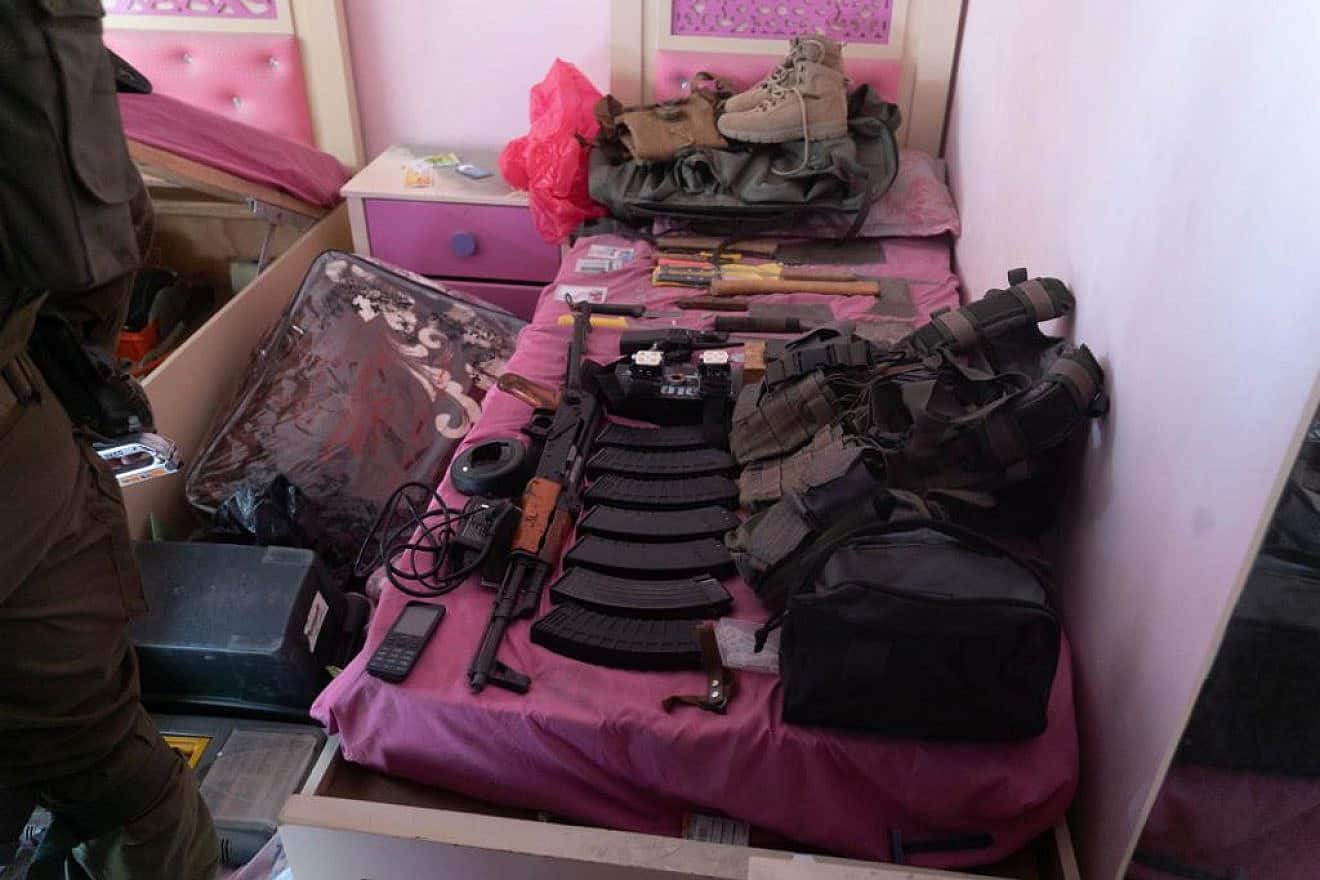On Saturday, the Israel Defense Forces’ Spokesperson’s Unit released video footage of a drone entering a home in Rafah and finding it booby-trapped with large explosive barrels, one of which was placed next to a door.
In its war against Hamas, the IDF has faced the formidable challenge of operating in an environment where a significant percentage of buildings and homes in the Gaza Strip are filled with weapons.
While the exact proportion of buildings scanned by the IDF and found to have contained weapons isn’t known, it is considered very high according to estimates within the Israeli defense establishment.
Hamas has established one of the most fortified terror bases in the world within Gaza, with extensive military infrastructure embedded in civilian areas both above and below ground.
The practice of mass installing weapons in civilian homes is just one part of Hamas’s 17-year entrenchment program that has turned the Strip into a terror fortress that lacks any parallel in the world.
Since the start of the IDF’s ground maneuver into Gaza on Oct. 27, the Israeli military and intelligence community has worked very hard to distinguish between civilian and military targets—a line that is deliberately blurred by Hamas.
The IDF has found that it is not just the homes of known terrorists or commanders that are stocked with weapons, but a large number of civilian households as well. These homes have been repurposed into storage centers for an array of weaponry, including AK-47s, anti-tank missile launchers, RPGs, bombs, mortars, IEDs and sniper rifles.
Whether in southern Gazan districts like Rafah, where the 162nd Division is currently operating, in northern Gaza, where the 98th Division is operating (after spending four months fighting in Khan Yunis, in southern Gaza), or central Gaza, where the 99th Division is operating, soldiers and officers are finding incredibly large numbers of homes prepped with weapons.
This is so terrorists can walk the streets in civilian clothes, unarmed, reducing chances of being detected by the IDF, arrive at a weapons pick-up center, and begin rapidly attacking from there.
This tactic not only endangers Israeli soldiers but also places civilians at significant risk.
According to a recent report by Ynet, large explosives have been hidden within walls, and terrorists also broke down walls between crowded homes to create passages in ways that are reminiscent of how terrorists operated in Nablus during the IDF’s “Operation Defensive Shield” in 2002.
The IDF’s divisions are learning from their own experience and from one another to deal with this trend as the ground maneuver continues.
House by house
The concealed weapons and underground networks mean the IDF must dismantle this hidden infrastructure to avoid allowing Hamas to regroup and rearm quickly, as it had already begun to do in Jabalia before the IDF returned to northern Gaza in recent weeks.
The IDF’s methodical approach involves clearing each area house by house, ensuring that all weapons are found and neutralized before moving on. The homes of terrorist commanders are often destroyed.
The presence of weapons in civilian homes highlights the involvement of Gazan civilians in various capacities within Hamas’s war machine. While some civilians may be coerced or have little choice due to the Islamists’ ability to threaten them, others are willingly involved in Hamas attacks. This complicates the humanitarian situation, as distinguishing between combatants and noncombatants becomes difficult in such cases.
Hundreds of kilometers of tunnels running under these civilian areas are part of the same operational logic of turning Gaza into one massive shield for Hamas.
Despite the IDF’s efforts to minimize civilian casualties, including through the successful mass evacuation of battle zones, the presence of weapons in homes increases the risk of collateral damage. Hamas’s tactic of embedding its military infrastructure within civilian areas serves to invite international condemnation of Israel’s actions, even as the IDF strives—more than any Western military—to conduct its operations within the bounds of international law.
Throughout the years that Hamas turned homes, hospitals, mosques, schools, United Nations installations and more into its bases, its planners did not likely believe that the IDF would one day arrive and take on this unprecedented challenge.
As such, at least at the operational level, this entrenchment approach has failed in its goal of preventing the IDF from accessing Hamas’s core zones of operations.


























